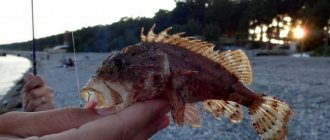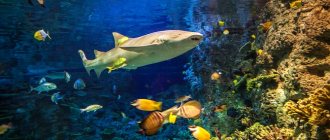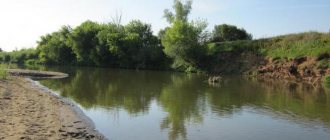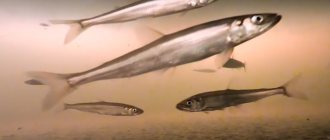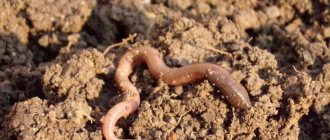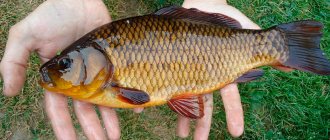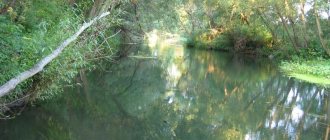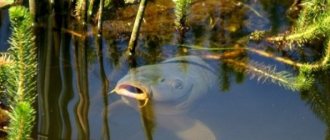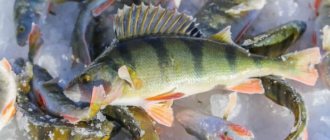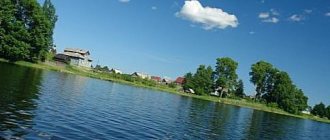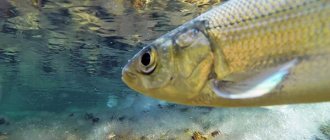home
Useful articles
Just about Far Eastern shrimp: which is the most delicious?
10/22/2020 We talk about Far Eastern shrimp from the buyer’s point of view
.
What types are there, how do they taste different and what is worth trying first. Firstly, shrimp can be wild
, caught in the sea and ocean, and
aquaculture
- these are bred in special farm ponds on a specially selected diet.
All Far Eastern shrimp are wild cold-water
, that is, species that live in the cold northern seas and are considered the most environmentally friendly and tasty.
caught in the natural environment are
, of course, much
healthier and tastier than
their counterparts from warm-water captivity.
Wild shrimp fatten their meat in natural conditions, eating natural products, and therefore they contain more vitamins. By the way, it is precisely because of the meager diet of wild shrimp that the “vein” (aka stomach), as a rule, does not require removal, since, unlike its aquaculture counterparts, it does not feed so abundantly.
On the side of the latter is
size
; on a farm in Thailand, a shrimp
can grow up to
400 grams
in a year , while a wild Far Eastern shrimp takes as many as
4 years
to gain
ten times less
weight.
On the left is a wild northern shrimp, on the right is an aquaculture Vannamei shrimp.
Secondly, according to the method of processing, shrimp can be already cooked,
boiled-frozen
, which is boiled directly on the ship in sea water, and
raw frozen
, which are frozen fresh.
Boiled-frozen shrimp is a ready-to-eat product
that just needs to
be defrosted correctly
(in the refrigerator, gradually, and under no circumstances
thrown into boiling water
) - and can be eaten or added to different dishes.
Raw frozen shrimp is a much more complex, delicate seafood product, often intended for connoisseurs
.
After all, freshly frozen shrimp, after gradual defrosting, can be used to prepare the most proper and delicious sashimi, sushi
and other traditional Japanese seafood dishes
without heat treatment
.
Only raw-frozen shrimp can be baked on the grill
: boiled-frozen ones have already been cooked and from repeated heat treatment they will simply dry out and become like unappetizing rubber.
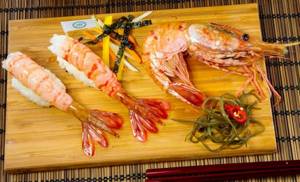
Botan is the largest Russian shrimp and a recognized delicacy.
But raw frozen shrimp require more gentle handling.
So, if boiled frozen shrimp are simply covered with a thin layer of glaze
to prevent moisture loss, then raw frozen shrimp must be packed in
a vacuum bag
, otherwise drying can have a detrimental effect on the consistency of their meat and taste.
By the way,
the cold-water fresh-frozen shrimp “Botan Ebi” and “Ama Ebi” differ from the
warm-water ones
not
in blue-green
, but in the rich
reddish
or pink
color of the shell
due to the peculiarities of their habitat and nutrition in the northern seas
Northern shrimp
Probably the most popular Far Eastern shrimp with dense, elastic and sweetish pinkish flesh. Size - from small (90/120 shrimps per 1 kg) to medium (70/90 or 50/70 pieces per 1 kg). In its raw frozen form, northern shrimp has the Japanese name “Ama Ebi” - and this is the best option for gourmets to eat shrimp without heat treatment, raw. Northern shrimp is ideal for sushi, sashimi and other traditional Japanese dishes with fresh shrimp meat.

Black Sea shrimp palemon elegant with blue and yellow stripes on the legs
More underwater photos. Again Omega Bay in Sevastopol, again I snorkel in the Black Sea. In some places on the rocks, among thickets of low algae, you can find interesting crustaceans with almost completely transparent bodies, as if made of glass. Another feature of them is the bright yellow and blue stripes on their legs and claws. This is what the slender palemon shrimp looks like, also known as the elegant palemon or stone shrimp. She swarms among the thickets, looking for animal remains with her long claws. Two years ago I already showed this shrimp (there were slightly lighter and higher-quality photos) among other inhabitants of the underwater world of the bay.
Elegant palemon or Stone shrimp or Slender palemon (lat. Palaemon elegans) is a relatively large translucent crustacean. It has a transparent shell, which allows you to examine all the internal organs of the shrimp in great detail. The blue and orange bands on the paws are striking in their beauty. The maximum body size of an adult shrimp is about 7 cm. However, thanks to the long mustache and outgrowths of the shell, the size of the shrimp visually increases.
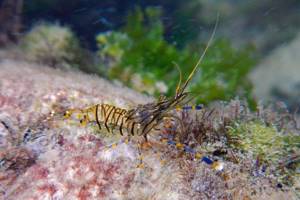
Even the Latin name “elegant” emphasizes the special grace of this almost completely transparent creature with brown stripes on the body and blue and orange on the chest legs.
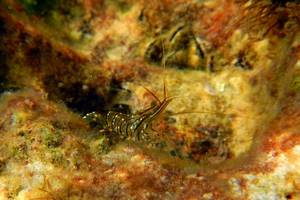
The body of Black Sea shrimp is elongated, laterally compressed, the head and chest are covered with a cephalothoracic shield - the carapace, its anterior edge is usually extended into a toothed process - the rostrum.

The eyes of the representatives of the suborder are stalked, the first 3 pairs of thoracic limbs are transformed into oral appendages, the 5 posterior pairs into walking legs, and the swimming legs and tail fan are well developed on the elongated abdomen.
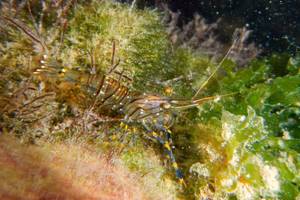
This species prefers to live in thickets of aquatic plants, where it lives in large concentrations. The shrimp slowly walks along the bottom, nibbling algae sprouts and looking for dead animals. Slender palemons usually live in large groups.
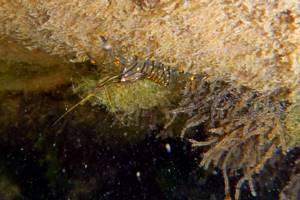
The shrimp lives in thickets of aquatic plants, where it lives in large concentrations. Animals can be distinguished by sex when they reach a size of 7-8 mm in length. However, they become sexually mature at the age of about 1 year with a length of 25-30 mm. Females are larger than males, and ripening eggs are visible inside the body. In males, the first pair of abdominal legs is longer and the second pair has an additional process.
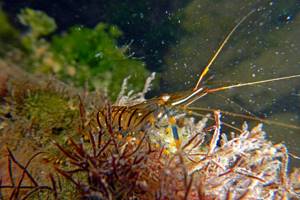
The female lays up to 200 sticky eggs, which stick to her abdominal legs. Newly laid eggs are orange in color, but as they mature, their color changes.
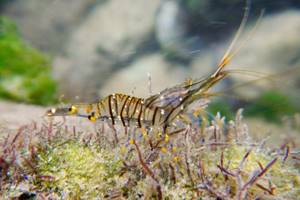
The development period of eggs depends on temperature and ranges from 2 weeks to a month. The hatched young shrimps at first remain sitting on the abdominal legs of the female, and then move on to independent life. Their body size is about 1.2 mm.
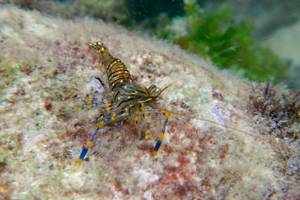
Until reaching a size of approximately 7 mm, juveniles lead a planktonic lifestyle. With good nutrition, young shrimp often molt and grow quickly.
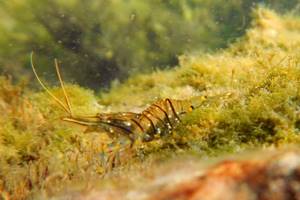
Inhabits shallow, coastal sea waters, also found in brackish waters of at least 1‰ salinity, on any type of soil, but subject to the presence of aquatic vegetation.
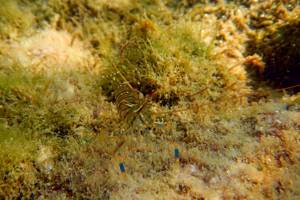
The primary range covers the Atlantic coast of Africa, south to the Cape of Good Hope, and Europe north to Norway. In the 1950s, the species was artificially introduced into the Caspian and Aral Seas. At the end of the 20th century, the species was recorded in the western part of the Baltic Sea, after which it began to colonize coastal shallows and lagoons to the east including the Vistula Lagoon. This European-African shrimp was brought to the Black Sea during the introduction of mullet, and was first discovered in 1957.
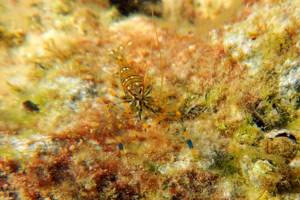
This shrimp received its original name because of its habitat, since large accumulations of slender palemons are often observed near rocky capes and shallow bays with a rocky bottom, covered with dense thickets of cystoseira. Stone palemon is quite unpretentious to changes in salinity of the aquatic environment and can live at 5-35 ppm.
Botan crest shrimp
The largest shrimp in the Russian seas (the caliber is usually 30/40 pieces per 1 kg), it is considered a delicacy. The color of the shrimp is rich reddish, the sweetish meat is similar to crab. Just like northern shrimp, it can be eaten raw and is sold fresh-frozen along with boiled-frozen. Raw frozen scallop shrimp is great for grilling.

How to catch shrimp?
Crustaceans are valuable, nutritious and tasty seafood. They contain many vitamins, acids and minerals (calcium, magnesium, sodium, iron, iodine, etc.). The beneficial substances they contain help stabilize hormonal levels in the human body and increase its immunity. The disadvantage of shrimp meat is its high cholesterol content.
For their taste, they are valued among gourmets and fishing enthusiasts. Therefore, shrimp fishing is carried out both on an industrial scale and by fishing enthusiasts. The latter prefer not only to eat them, but to sell them to local cafes and restaurants.
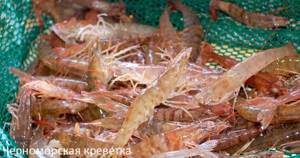
Shrimp fishing is most often carried out in the evening or at night. It is best to choose areas in the form of a backwater for this, because In places where the reservoir narrows, it is convenient to install trawls or traps. Caught crustaceans can be consumed not only for food, but also used as bait or as bait for fishing.
Many fishermen fish not only in the coastal zone, but also from a boat. And the most ancient method of shrimp fishing was popular in Belgium and was carried out with the help of specially trained horses that pulled shrimp nets.
Habitats
To catch large quantities of crustaceans, you need to know exactly where the shrimp live. Their favorite areas are the bottom layers at a depth of 0.6 to 1.5 m, where there are accumulations of seaweed. If there are low tides and high tides in the selected location, then the exact time of their occurrence should be known, because Low tide hours are considered the most convenient for fishing.
Equipment and methods of fishing
Basic tools and methods of shrimp fishing:
- A shrimp net (other names are landing net or drachka), consisting of a large-diameter metal circle (at least 70 cm) or a rectangle (aluminum, etc.), on which is attached a bag up to 3-4 m long made of fine mesh, and a long durable handles. A weight is attached to the bottom of the net, and sticks are attached to the sides, with which you can pull the net along the bottom when entering the water.
- Trawls are made of 2 types (mid-depth and bottom), 4 ropes are tied to them, designed to be pulled so that the entire device stretches along the bottom of the reservoir behind a person. In this case, the fisherman stands waist-deep in water and drags the trawl against the current.
- When fishing with a net or trawl, a flashlight is a bait to attract the attention of aquatic inhabitants, as well as additional illumination.
Homemade traps are widely used for catching Black Sea shrimp. To make a shrimp tank you will need the following materials:
- nylon mesh with cell 14 - piece 1.5x1.5 m;
- galvanized rigid wire - 3−4 m;
- thin wire braided in plastic - 0.6 m;
- 4 m of nylon thread (twine);
- float (plastic bottle, etc.) and rope.

First, a piece of mesh is taken and stitched into the shape of a large pipe. Another piece measuring 15x30 cm is similarly sewn along the length to enter the trap. A piece of thin wire is passed through it to create a ring-shaped entrance. The edges of the wire must be twisted and secured.
Then the galvanized wire is threaded into the cells in the form of a spiral, which will hold the trap with rings. After 2-3 turns inside and 1 outside, its ends must be fixed at the first and last rings. Then you get a circle, then both edges of the large pipe need to be sewn to the wire rings using twine.
At the end, between the middle rings, you should tie the bait with a rope. The float is also attached to the middle of the shrimp tank. Black Sea fishermen often use slightly rotten meat as bait.
The simplest shrimp trap is made from a plastic bottle (float), a weight and a plant called a tumbleweed or broom. Several bushes need to be tied together, a sinker attached to the bottom, and a float on top. The trap should be lowered to a depth of 1 m overnight. Shrimps climb en masse on wet plants. In the morning, all that remains is to shake them out into a nearby bucket. However, this old-fashioned method is considered poaching and may be subject to a fine.
Greenland shrimp
A very rare type of shrimp, called “Sea Dragon” for its specific appearance, with very tasty soft, slightly sweet meat. This shrimp is harvested only 4 weeks a year and therefore it is not always possible to find it on sale. The bright red and white color of the shell of a boiled shrimp will prevent it from being confused with others. The size of Greenland shrimp is usually medium (70/90 pieces per 1 kg).

Place and time of fishing
For an effective trip for crustaceans, it is best to choose places like a backwater - it is easier to install the necessary gear there. You can also search for it in the coastal area using a boat. The best places for mooring are considered to be piers, rocks sticking out of the water, areas near the bottoms and sides of large ships.
To learn more:
Fluorocarbon pike leashes: the secret to successful fishing
Evening or night time is the most optimal time of day for effectively catching shrimp. An additional and successful bait can be the light of a flashlight, with which you can create reflections on the water and attract the desired prey. Low tides also help increase the number of catches. Knowing when they come, you can safely go hunting. There is a chance to catch these animals during daylight hours, but you shouldn’t hope for big catches.
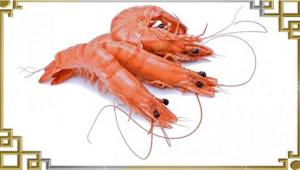
Chilim
Far Eastern shrimp with dense, slightly dry meat - compared to northern shrimp. Extremely popular in the Far East, it is rarely found on sale in the European part of Russia.

***
We hope our material helped you navigate the types of Russian shrimp and you can approach the purchase of this delicious seafood fully armed!
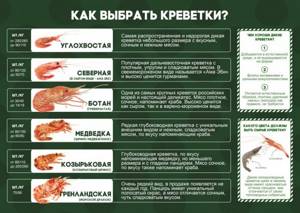
Return to list
Shrimp tackle and traps
There are four main methods for extracting these tasty arthropods from water:
- With the help of a net.
- Using the capabilities of the trawl.
- Catching shrimp with nets.
- Industrial fishing of crustaceans.
Fishing with a net
Having chosen the first method, you need to prepare reliable tackle. The rim for such equipment is made of metal, with a strong mesh attached to it. The diameter of the drachka (as professionals call it) does not exceed 70 centimeters, and its handle should be moderately long and reliable. With the help of a net, in the evening and at night, they probe the favorite places of shrimp: areas near groins, ship sides, slipways, piers, and other objects of the coastal zone, covered with grass, algae and mud. By illuminating such places with a flashlight beam, you can attract more crustaceans.
Trawl fishing
In appearance, it resembles a rectangle (or semicircle) made of metal, to which a fine-mesh mesh about 3-4 meters long is attached with a bag. Such equipment is lowered to the bottom and pulled by ropes tied to a metal frame. The fisherman enters the water at least waist-deep. It is better to use this device in those areas where shrimp live, where the depth is shallow and there are no crowds of people. If such places are covered with lush aquatic vegetation, this increases the chances of success.
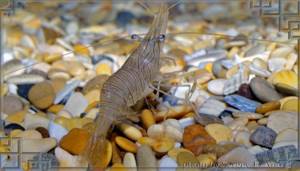
Netting
This method is used in cases where arthropods are caught from a boat. The tackle with weights attached to it is lowered smoothly to the bottom in the habitats of arthropods. The net is taken out of the water by the cord provided by the design of the tackle, the catch is removed from it and re-thrown as many times as possible until the fisherman is satisfied with the catch.
To learn more:
Shitik in the house: caddis larvae as catchable bait
Large-scale catch
For the state shrimp fishery, large trawls are used, which are lowered to the bottom and pulled by ships. The gear picks up not only arthropods, but also other representatives of the underwater world, including algae, mollusks and ordinary garbage. The catch is lifted onto the deck using winches, sorted, frozen, and later the finished seafood is delivered ashore. Trawl behind the ship allows for deep-sea fishing, but this is a very expensive and technologically complex process that only large fishing companies can afford.

Restrictions and bans on shrimp fishing
In accordance with the Order of the Ministry of Agriculture, a ban on shrimp fishing is imposed annually for the entire summer period. From June 1 to August 31, 1 person is allowed to catch no more than 5 kg of crustaceans. Fish protection officers carry out daily raids along the Crimean coast in order to prevent shrimp fishing.
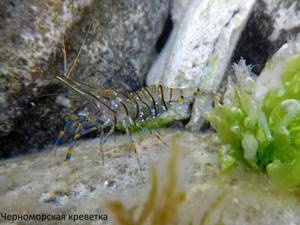
However, from September 1, the season resumes. The condition of shrimp in the Azov and Black Seas, according to experts, is favorable. Their number is growing steadily, which is of interest to the official fishery and contributes to a rich catch.
Since 2021, fishing for these crustaceans has been carried out by mining organizations in the Krasnodar Territory and Crimea. The caught catch is supplied to restaurants and other food establishments. The domestic market for shrimp is in high demand due to its rapid reproduction. According to statistics, the annual shrimp catch in the Black and Azov Seas is more than 1.5 tons.
How to preserve shrimp
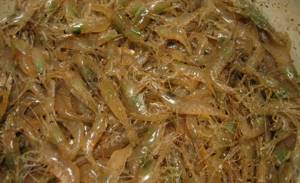
2-3 hours after being caught, this seafood becomes unusable, which dictates the creation of special conditions for its preservation. Therefore, the following methods are used to save it. Amateur fishermen stock up on a special container with ice, into which they place the shrimp after catching. When industrial fishing methods are used, it is frozen on the ship immediately after catching.
If you take a plastic bottle (and there is plenty of this stuff everywhere), cut it off, fill it with water and place it in the freezer, then you can preserve shrimp in this way for a long time. Shrimp can then be transported over short distances. At the same time, the water has time to melt, and the seafood does not lose its quality.
Some fishermen store it for some time (up to 2 hours), placing the shrimp in a container with sea water and seaweed. This is what fishermen do if they want to preserve shrimp as bait.
Reproduction
Most shrimp reproduce easily in home aquariums if favorable conditions are provided. As a rule, females are larger and potbellied than males. After mating, the female bears about 30 eggs, first under the shell, then under the abdomen, fanning them with her legs. Tiny shrimp are born after about 3 weeks. They are so small (about 1 mm) and vulnerable that only dense thickets of plants can keep them alive. Baby shrimp are able to feed on their own, searching for organic matter on the bottom and in the grass.
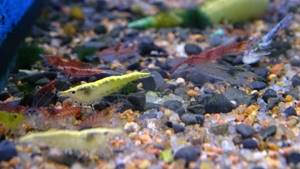
Yellow fire shrimp Neocaridina heteropoda
Not all freshwater shrimp can reproduce without problems in a home aquarium. For example, in Indian rednose shrimp and Amano shrimp, the eggs hatch not into small shrimp, but into larvae that require brackish water. To complete the transformation cycle, they then need to return to fresh water again.
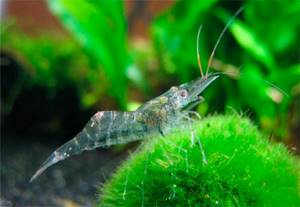
Freshwater glass shrimp Palaemon
